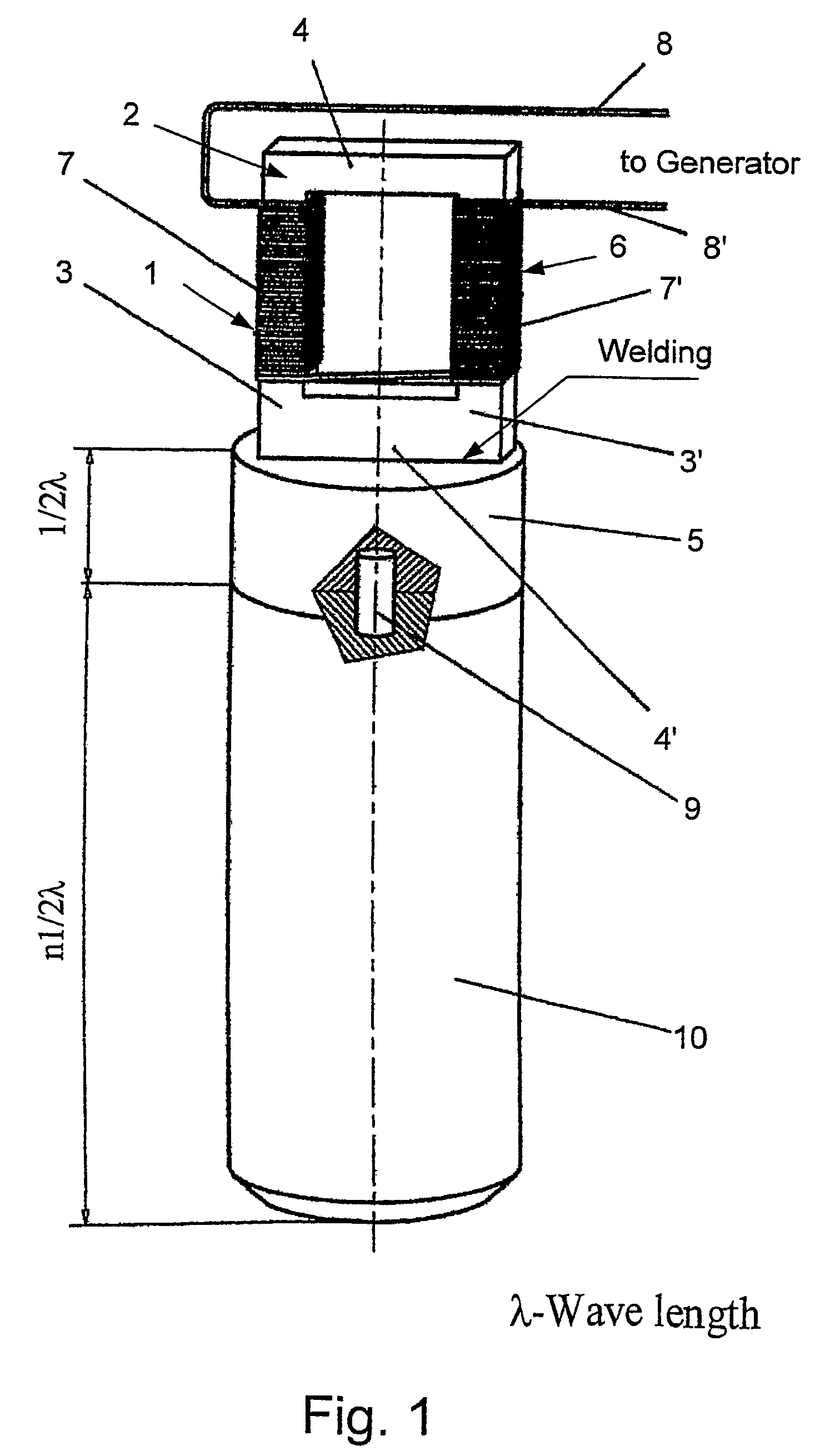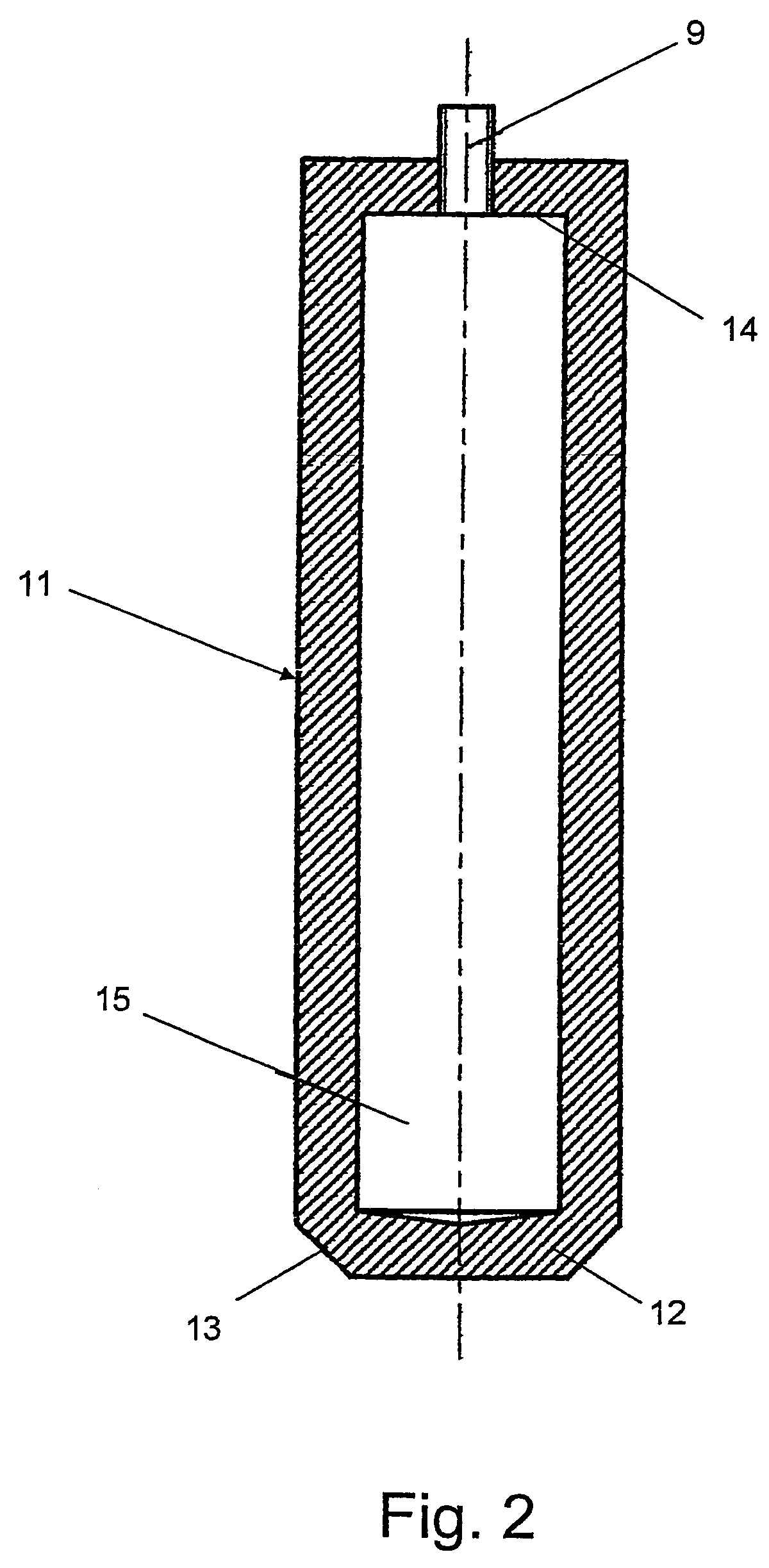High power ultrasonic reactor for sonochemical applications
- Summary
- Abstract
- Description
- Claims
- Application Information
AI Technical Summary
Benefits of technology
Problems solved by technology
Method used
Image
Examples
example 1
Production of Nano Iron Hydroxide Powder
[0075]The iron hydroxide is produced from an iron salt, in this example iron chloride, and a base, particularly an alkali hydroxide, in this example sodium hydroxide, according to the following reaction:
2FeCl3+6NaOH→2Fe(OH)3+6NaCl
[0076]The reagents are prepared by weighing with an analytical balance and preparing water solutions of iron chloride and sodium hydroxide.
[0077]The reaction is carried out under high power ultrasound according to the following parameters:
[0078]Reaction composition: iron chloride—80 gr.[0079]1. sodium hydroxide—60 gr.[0080]2. distilled water—950 gr.
[0081]Time of reaction—5 minutes
[0082]The product is Nano iron hydroxide powder, having particle size below 100 nm.
example 2
Production of Nano-Amorphous Nickel Hydroxide Ni(OH)2
[0083]The nickel hydroxide is produced from a nickel salt, in this example nickel chloride, and a base, in this example sodium hydroxide, according to the following reaction:
NiCl2+2NaOH→Ni(OH)2+2NaCl
[0084]The reagents are prepared by weighing with analytical balance and preparing water solutions of nickel chloride and sodium hydroxide.
[0085]The reaction is carried out according to the following parameters:
[0086]Reaction volume—1 liter
[0087]Reaction composition: nickel chloride—70 g[0088]a. sodium hydroxide—25 g[0089]b. distilled water—900 ml
[0090]Time of reaction—5 minutes
[0091]The product nickel hydroxide is a green amorphous material having surface area (BET)>350 m2 / gr and particle size (HRSEM) of 20–60 nm.
example 3
Production of Nano-Crystalline Cobalt Powder
[0092]The cobalt is produced from a cobalt salt, in this example cobalt chloride, and a powder of a metal capable of reducing said salt to cobalt metal (hereinafter indicated by “M”), according to the following reaction:
CoCl2+M→Co+MCl2
[0093]The reaction is carried out according to the following parameters:
[0094]Reaction volume—1 liter
[0095]Reaction composition: cobalt chloride—240 g[0096]a. M—reducing metal[0097]b. suitable solvent—1 liter
[0098]Time of reaction—5 minutes
[0099]The product is hexagonal cobalt powder, having a specific weight of 8.9 g / cc and a black color, and particle size 10–40 nm.
[0100]Other metals can be produced by similar reactions.
PUM
| Property | Measurement | Unit |
|---|---|---|
| Power | aaaaa | aaaaa |
| Length | aaaaa | aaaaa |
| Diameter | aaaaa | aaaaa |
Abstract
Description
Claims
Application Information
 Login to View More
Login to View More - R&D
- Intellectual Property
- Life Sciences
- Materials
- Tech Scout
- Unparalleled Data Quality
- Higher Quality Content
- 60% Fewer Hallucinations
Browse by: Latest US Patents, China's latest patents, Technical Efficacy Thesaurus, Application Domain, Technology Topic, Popular Technical Reports.
© 2025 PatSnap. All rights reserved.Legal|Privacy policy|Modern Slavery Act Transparency Statement|Sitemap|About US| Contact US: help@patsnap.com



